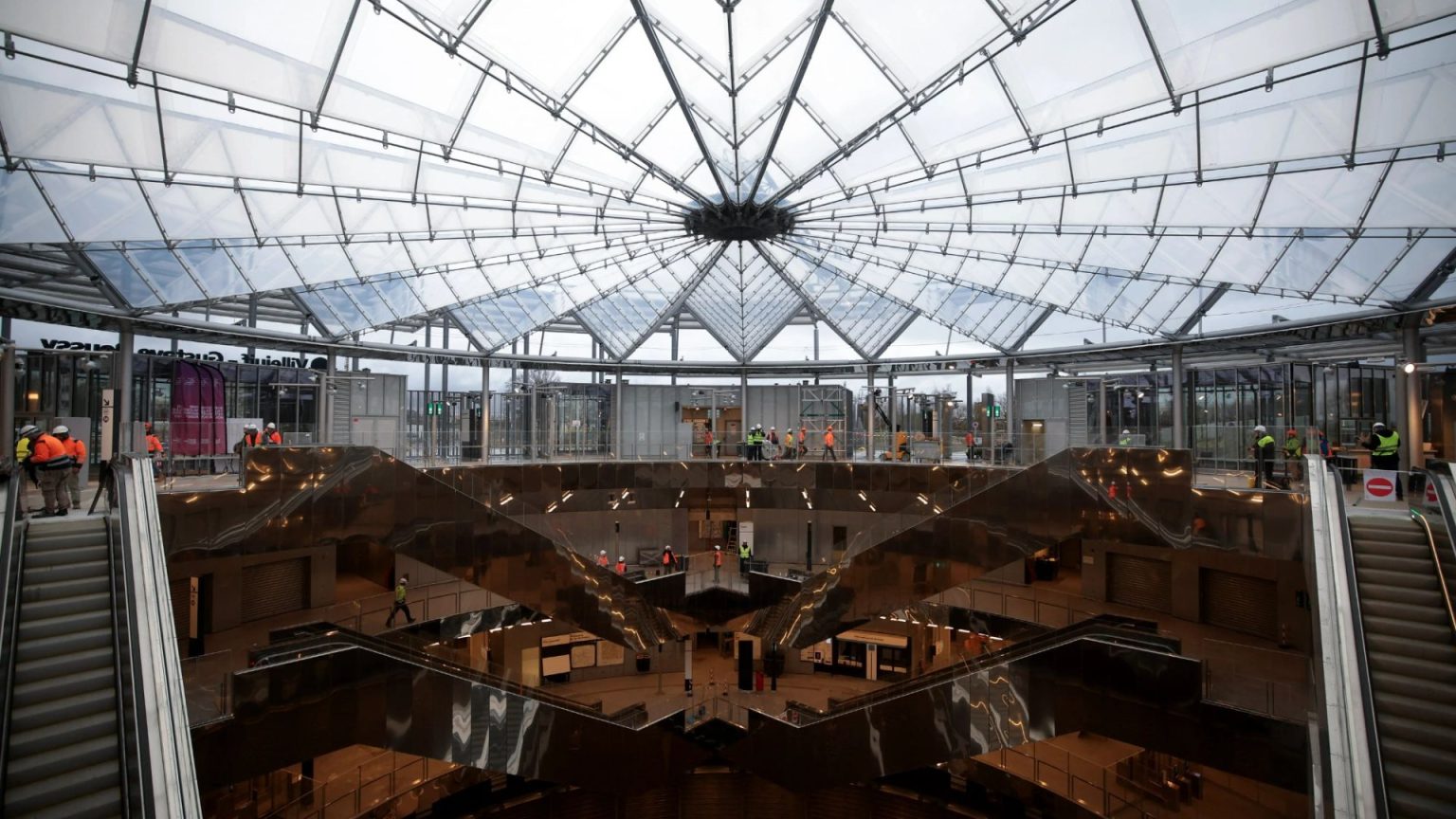A New Transportation Hub in the Heart of Paris: Villejuif-Gustave-Roussy Station
Paris, consistently ranked among the world’s most visited cities, is set to unveil a significant addition to its transportation infrastructure: the Villejuif-Gustave-Roussy station. Scheduled to open on January 18, 2025, this state-of-the-art station marks a pivotal moment in the ambitious Grand Paris Express project, a €36 billion initiative aimed at revolutionizing the Parisian metro system. The project encompasses the creation of four entirely new metro lines and the expansion of an existing line with eight additional stations, significantly enhancing connectivity and easing the strain on the existing network. The Villejuif-Gustave-Roussy station represents the culmination of the latest phase of this ambitious undertaking, following the successful launch of seven new stations on Line 14 in June 2024, preceding the city’s hosting of the Olympic and Paralympic Games.
The Villejuif-Gustave-Roussy station is an architectural marvel, spanning nine levels and incorporating 32 escalators and 16 lifts to facilitate smooth passenger flow. Its deepest point plunges nearly 50 meters underground, providing access to the station’s two platforms. Designed by Dominique Perrault Architecture, the station boasts a striking glass roof, flooding the interior with natural light. Adding an artistic touch, the ceiling features a mesmerizing installation by Chilean artist Iván Navarro, composed of 58 illuminated panels that contribute to the station’s ultra-modern aesthetic. The station’s opening was delayed from its initial target date in December 2024 due to additional construction work required to integrate the station with the forthcoming Line 15.
The upcoming Line 15, slated to begin operations in the summer of 2025, forms a crucial component of the Grand Paris Express project. This new line will further extend the reach of the Paris metro, enhancing access to various parts of the city and surrounding regions. With the extension to Orly Airport, Line 14, stretching over 30 kilometers, now holds the title of the longest metro line in the Paris region, connecting Saint-Denis-Pleyel in the north to the airport in the south. This expansion is vital in accommodating the ever-increasing number of visitors flocking to the French capital, reinforcing its position as a premier global destination.
Paris’s allure as a city break destination remains undeniable. In 2024, it secured the top spot as the world’s most popular city break destination, attracting a greater influx of tourists than any other city. The continuous development and enhancement of its transportation network, exemplified by the Villejuif-Gustave-Roussy station and the Grand Paris Express project as a whole, plays a crucial role in maintaining this status. By providing efficient and modern transportation options, Paris ensures a seamless and enjoyable experience for its visitors, further solidifying its reputation as a must-see destination.
The trend of constructing innovative and architecturally striking train stations extends beyond Paris. Across Europe, cities are investing in modernizing their transportation hubs. A prime example is the recently opened Mons Station in Belgium, a £384 million project boasting a futuristic design reminiscent of something out of Star Trek. Designed by renowned Spanish architect Santiago Calatrava, the station showcases a bold and unique architectural style, similar to his other notable works such as the City of Arts and Sciences in Valencia and the World Trade Center Transportation Hub in New York. Although significantly delayed, finally opening years after its initial 2012 target, Mons Station now stands as a testament to modern architectural ingenuity.
Further exemplifying this trend is Liège-Guillemins station, another Belgian station featuring a vibrant multicoloured glass roof, a distinctive landmark that has even graced the silver screen in several Hollywood productions. These examples highlight a growing emphasis on creating transportation hubs that are not merely functional but also visually appealing and representative of a city’s identity. The Villejuif-Gustave-Roussy station follows in this tradition, adding a modern and aesthetically pleasing structure to the Parisian landscape while significantly improving the city’s transportation network. These initiatives reflect a wider movement towards integrating architectural innovation with urban planning, enhancing both the functionality and the aesthetic appeal of public spaces. As cities continue to evolve, investments in modern and efficient transportation infrastructure become increasingly vital, not only for facilitating travel but also for contributing to the overall urban experience.
Beyond the architectural advancements, the expansion of train networks offers opportunities for unique and memorable travel experiences. Sun Travel journalists have documented their diverse rail journeys, sharing perspectives on some of the world’s most captivating routes. From the scenic snow-capped mountains of the Swiss Alps on the Davos to Geneva route to the high-speed thrill of Japan’s Shinkansen bullet train between Tokyo and Kyoto, each journey offers a unique blend of landscapes and cultural immersion. The efficiency of the Eurostar connecting London and Paris, the breathtaking natural beauty of the Scotrail journey from Glasgow to Fort William, the transcontinental adventure of the Trans-Mongolian Express from Beijing to Ulaanbaatar – each train journey unfolds a distinct narrative, providing travelers with an intimate connection to the regions they traverse. These experiences underscore the transformative potential of rail travel, offering not just a mode of transportation but a gateway to discovery and exploration.




